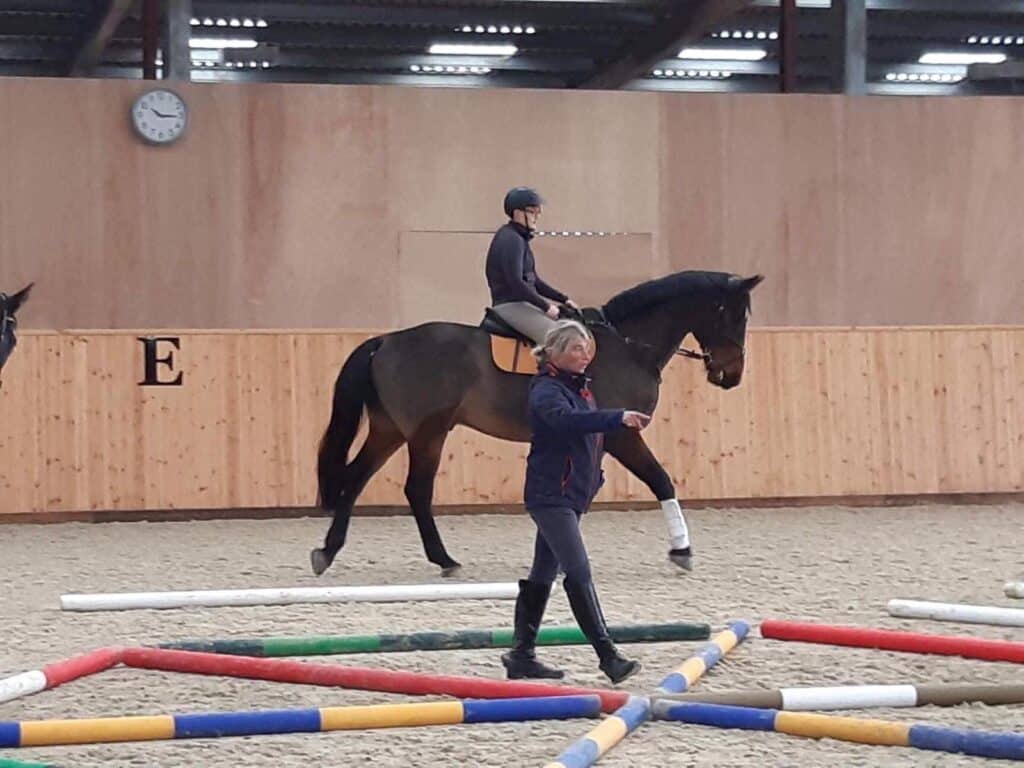Featured, Mental Health, Rider, Training, Training and Management
Confidence is a state of mind….
Christa Dillon, digs into our irrational but often, all too real fears
The old adage that ‘confidence is a state of mind’ is undoubtedly true. However, the common misconception is that we are either brimming with confidence – or we aren’t. We tend to look at top riders and presume, that they wake up every day feeling like superheroes. We assume that their mindsets are infallible and, if we could just tap into that voodoo magic for ourselves, we would be winning medals and trophies galore.

Sharing your woes when your confidence in the saddle is not where it should be, can run the risk of well-meaning folk telling you that you need to just ‘get on with it’ or, that your lowered self-belief is somehow something you have brought upon yourself with the wrong horse, the wrong trainer – the wrong ‘whatever’. Their attempts to help can further increase and intensify feelings of inadequacy and failure; thus the cycle continues and worsens. Sports psychologists, mindset coaches and online self-help courses seem to be popping up more and more often; if you are struggling with your confidence, it can be impossible to know where to start.
Debunking the myth
It is important to understand that the primary job of the brain, is to preserve the life of its host. This most basic primal driver exists in all mammals and, it is a cornerstone fundamental in the long term evolution and survival of any species. We are flight, fight or freeze animals. The brain learns through trial and error, it hones its own unique individual ‘risk assessment’ process accordingly. It learns over the course of its life to identify when we need to run away, when we should fight, and when we ought to stay perfectly still. When the brain’s host decides that clambering aboard half a ton of primally-wired, partially domesticated animal looks like a fun idea, the brain faces a great number of new challenges. Constant scanning for risk, balancing on top of a moving animal, taking in and utilising new information, processing, thinking, feeling, reacting…when you break down all of the things the brain has to do – all at once and all of the time, its easy to see how much margin for error there actually is. The brain is the most complex and effective working mechanism on earth but, it is not infallible – unfortunately, it makes mistakes and in these instances, troubleshooting and system upgrades still have to be done manually!
People worldwide live with assorted types and levels of fears and phobias. Sometimes, these are appropriate. Sometimes, they are not. An easy analogy, as it relates to confidence in the saddle is, a fear of flying. Many people fear flying, but why? Do they fear the plane itself? Probably not. Do they fear the height? Maybe-but at 39,000 feet, it is often better to just not look out of the window if that is a concern. The root cause for a fear of flying is, that in the event of a catastrophic event, the passengers on any plane cannot take reasonable measures to secure their own safe outcome. Boarding a plane hands over responsibility for your survival to other human beings. You do not have control; you cannot take control.

Finding yourself with a real or perceived feeling of being unable to reasonably control the outcome of any situation, sets your brain’s threat alarm off like an atomic bomb. The usual response from the primal database, is one of flight. Adrenaline begins to flow. Breathing becomes ineasingly shallow, and faster. You might feel overwhelmed by the need to dash to the loo, or to vomit. Blood flows away from any internal organs that are not associated with getting ready to bolt for your life. You struggle to think in any detail. You feel anxious, and afraid. All of these responses come from the brain perceiving a large threat so instructing the body to prepare for exit. This is the most basic and most common example of the brain attempting to preserve the life of its host.
Woah, Nelly!
Because our brain is so complex and complicated, it can be impossible to understand why sometimes the brain seems to think that going to a dressage show necessitates a physiological response on a par with being chased by a T-Rex. The lines between preparing to perform and taking preservative action can be quite…. blurry. How do we teach our brain that Prelim 5 is unlikely to be life threatening? Well, that’s where things get interesting. Luckily, we live in a modern and progressive time. The need to understand the self as a whole and, with the aim of improving performance – be that in sport, in business or in life-has seen a steady increase in different types of support systems. Performance Psychology, Cognitive Behavioural Therapy, Neuro-linguistic Programming, performance hypnotherapy, mindfulness, meditation….. the list goes on and on.
There is enormous benefit to be gained for almost anyone, in deciding you would like to learn more about yourself. Working with a professional to achieve this can be life changing. Techniques such as thought stopping and positive reframing can be transformative, as can using mantras and short meditations. Sometimes though, we need a way to get from a state of escalating anxiety back to a place of calm. We need to slow everything down, bring some oxygen to the brain and regain control of our thought processes.
Calm it down
The 7-11 breathing exercise is a great place to start. A person will breathe in through their mouth to a count of seven. As they breathe in, they will fill the lungs and allow the tummy to push forward as the diaphragm expands down. The person will then breathe out through the nose, to a count of 11. This exercise repeated for 5-10 minutes will bring about a positive improvement in overall physiological and psychological function. This technique activates the Parasympathetic Nervous System, which is responsible for bringing about an opposing state to ‘fight or flight’-known as ‘rest and digest’. The out breaths during 7-11 decrease blood pressure, dilate the pupils and, slow the heart rate, which in turn lowers emotional arousal.
Breathing techniques are also completely free……

One final point Alongside building a support system and a mental ‘tool box’ for yourself, it can be very helpful to also implement the services of a good riding instructor or coach. This many-pronged approach can help a rider to adapt, overcome and improvise, and go from strength to strength-both on and off the horse.
